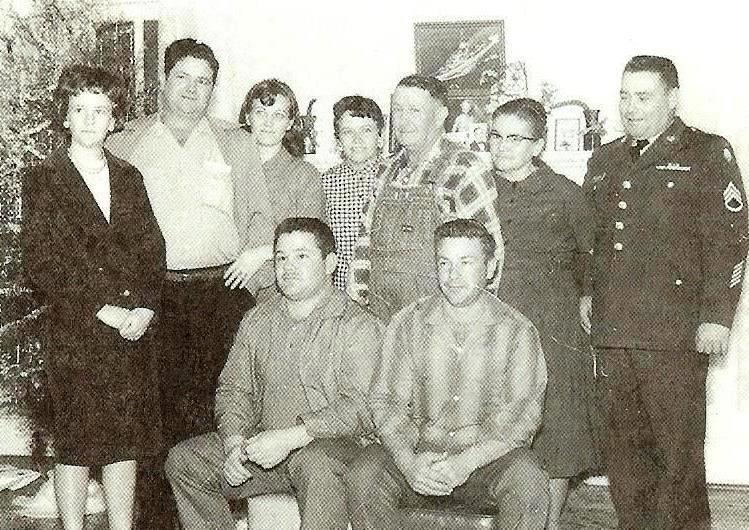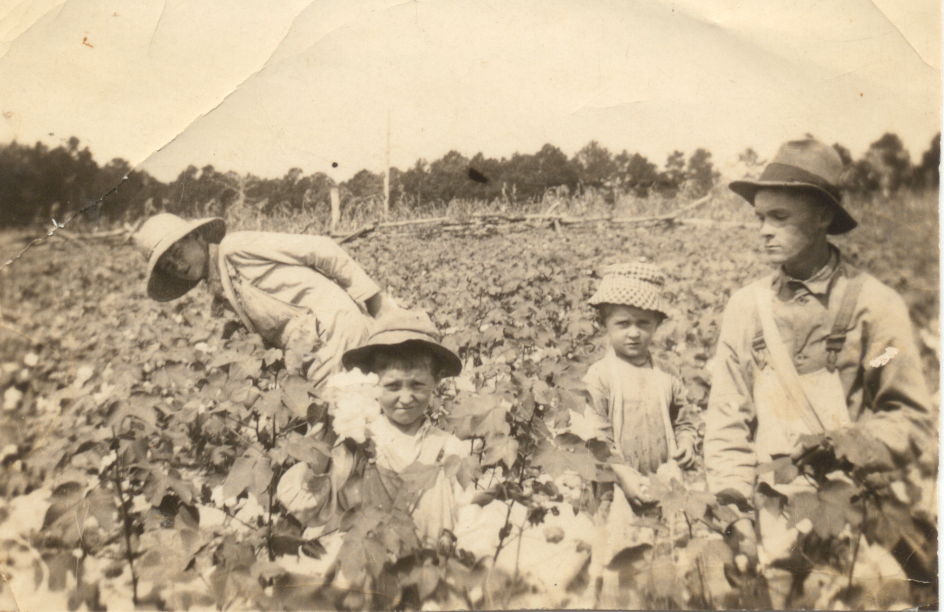Stories of Sharecropping and Tenant Farming
By Deborah Burkett
When times were hard in the early 1900s families moved around Texas for better financial opportunities. They went where the work was. Often young children lived in multiple places during their formative years because their parents were tenant farmers or sharecroppers who worked on land owned by others.
Both tenant farming (tenancy) or the sharecropping system gave greater independence and flexibility than wage labor. Some viewed tenancy as an agricultural ladder that could lead to farm ownership under the right conditions. Both sharecropping and tenant farming, existed from the 1870s to the 1950s, among blacks and whites.
Tenant farmers usually paid the landowner rent for farmland and a house. They owned the crops they planted and made their own decisions about them.
Sharecroppers seldom owned anything. Instead, they borrowed practically everything - not only the land and a house but also supplies, animals, tools, equipment and seeds. Sharecroppers had no control over which crops were planted or how they were sold.
Included here are stories of three families in Cherokee and Smith Counties. Their first hand accounts paint a picture of life long ago when "making do" was essential.
The Willie McElroy and Bessie Stockton Family
According to Mae Gean McElroy Pettit, "My young parents, Willie McElroy and Bessie Stockton, were living in a two-room farm tenant house, when I was born. It was located about three miles northwest of Mixon. The day of my birth December 5, 1924, was very cold. Daddy rode horseback through rain and sleet about 10 miles to Troup and notified Dr. D. B. Braly, who came to the house and delivered me. I was the first of seven children in our family…with so many young children during the late 20s, the 1930s and 40s my parents did what they could to make ends meet…In my teenage years I shared the household chores with Mama. When our crops were being planted, hoed or gathered we (children) worked in the fields… I attended to filling the two or three kerosene--sometimes called coal oil lamps. The lamps were our only source of light at night. Another chore I had was to bring cook-stove wood from the backyard stacks to the box near the stove."
Mae Gene continued, "…washing clothes was done in a wash pot, filled with hand drawn well water that was 60 feet deep. We heard about Oxydol soap on the radio and used it along with bars of soap my mother made...My brother and sisters wore diapers made of flour sacks. These same sacks made good night gowns for the entire family too. One of my favorite dresses, sailor style, was made of bleached 100-pound sugar sacks. The logo lettering was removed from the flour and feed sacks with a solution of water and lye. …Care was taken to use only the correct amount of lye, because it could ruin fibers of the material just like Clorox today…Wax paper from cereal and cracker boxes was saved and used to wrap items for our school lunches. There were rarely enough paper sacks for lunches, so pages from the semi-weekly Farm News (our newspaper) was used for this purpose. Twine string raveled from the seams of the feed sacks was used to tie the newspaper-wrapped lunches so they wouldn't come undone..."
Seen in the accompanying photo are Bessie and Willie McElroy with their children, Christmas 1973. Bessie is second from right; Willie is next to her in overalls. Their children seated L to R: Roger and Darrell McElroy. Standing L to R: Marie Lanham, Gerald McElroy, Billie Rix, Mae Gean, W.D., Bessie, and Tucker McElroy (Source was an article written by Mae Gean McElroy Pettit about her 'growing up days" which appeared in the Jacksonville Progress in 1986, during the Texas Sesquicentennial Celebration)

Edith Grace Freeman (Brown)
According to Edith, "…Daddy always had the wanderlust pretty badly and in the fall of 1921 he got a bad case of it and wanted to go back out west. Our Aunt Verdie lived at Littlefield, Texas, out on the plains and that's where he wanted to go. Mama cried about losing her two pretty cows and chickens, but by February 1928 Daddy had traded all the livestock …all the plows, even the corn we had grown that year, for a 1926 Ford truck… He built a "grub box" (like a chuck wagon) on the back of the truck where the tailgate was. We loaded all our household stuff in between the grub box and the cab of the truck, put wooden bows (like those used for a covered wagon) on it and a wagon sheet to cover everything up, including us four kids…Gladys was barely two years old and Mama was going to have another baby…We all had a good trip that winter…it tickled us kids to be out riding and camping at night and eating around the campfire…"
Seen in the accompanying photo is Edith Freeman (Brown) is third from left, with her siblings in the late 1920s. L to R: Cile, Gladys, Edith, Ruby and Baby Donnell sitting on the blanket at Edith's feet.
In July 1929, the family returned to East Texas again. Edith shared, "The last day of October we rented and moved into the "old Wilson place, near Troup…We felt like we were in heaven after living in little houses and the truck for two years. We kids all worked and grew up there...We went as high in school as there were grades; there were only 11 grades in school then. I finished the 10th grade in 1937 and then graduated from Tyler High School…"
Edith Brown and her future husband, Guy, had five boys and six girls and one premature boy who did not live. Growing up in the 1920s and the Depression years of the 1930's Edith knew what it meant to work hard and wanted her kids to know. Edith told them, "…always 'be saving', because a wasteful woman could throw more away out the back door with a teaspoon than a good husband could bring through the front door with a shovel." (Special thanks to Linda Brown Cross, one of Edith's 11 children. She gave me access to Edith's journal.)
_with_siblings_-_Burkett_June_16.bmp)
The Armstrongs
Elizabeth "Lizzie" Phillips Armstrong and her husband James F., along with their five sons and one daughter survived hard times, even though they owned their own farm. To make ends meet "Lizzie" and daughter, Viola Armstrong (Langston) sewed their clothes; the men slaughtered their own meat and everyone worked together to grow fruits and vegetables. Making a living required the work of entire families. The Armstrong children are seen picking cotton. Considered backbreaking labor today, for them it was just a way of life. L to R: Lawrence (bent over), Cecil, then next is their sister Viola, and Cleburn.

(Note: These stories and photos, along with many more can be found in Burkett's 2016 book, East Texas Piney Woods Spunky Women, 1830s to 1950s, Spirited Individuals Who Made a Difference).